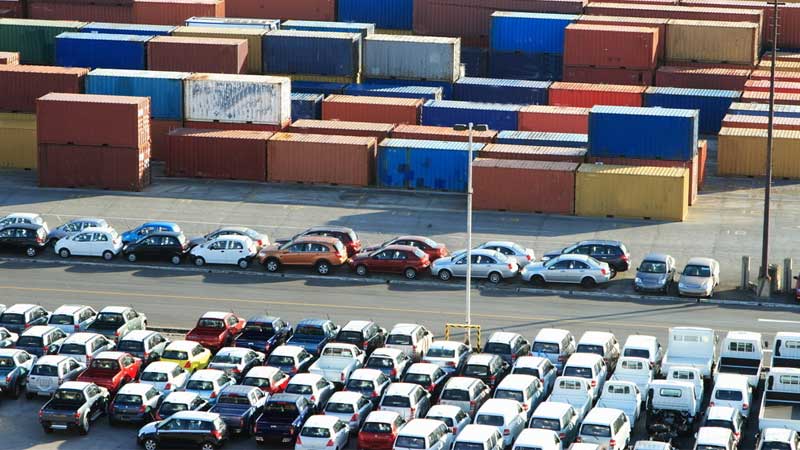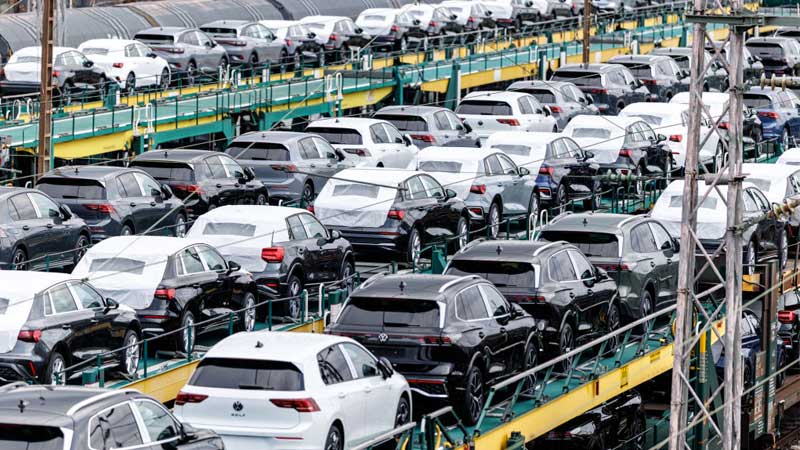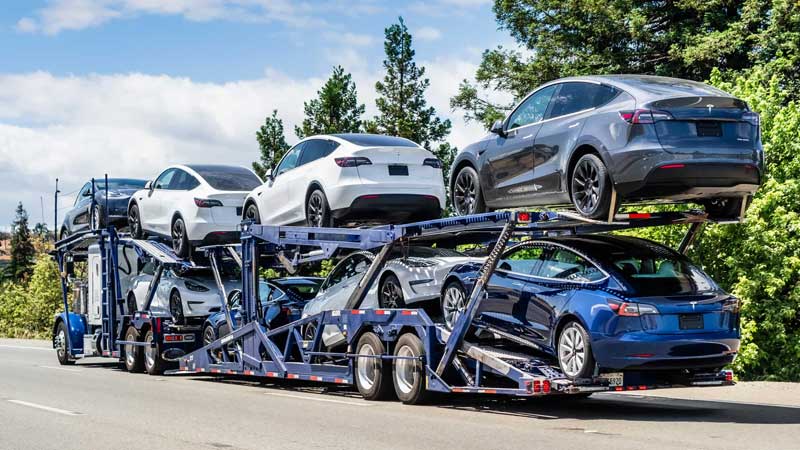President Donald Trump has officially announced the implementation of a 25% tariff on imported automobiles, a move that has been anticipated for weeks. The new tariff, which applies to vehicles not manufactured in the U.S., will take effect next week, adding to the uncertainty surrounding global auto trade.

The new import tax will be levied on finished vehicles, beginning at 12:01 a.m. EDT (0401 GMT) on April 3. The current base tariff for automotive imports in the U.S. stands at 2.5%, making this a significant increase that will have widespread effects on automakers, suppliers, and consumers alike.
This policy shift is expected to disrupt auto trade and supply chains, causing concern among investors and consumers. The announcement has already led to market volatility, with global auto stocks experiencing declines across Asia, Europe, and the United States.
Which Automakers Will Be Most Affected?
According to research from GlobalData, nearly half of all vehicles sold in the U.S. last year were imported. The degree of impact on individual automakers varies:
+ General Motors (GM.N) imports approximately 46% of the vehicles it sells in the U.S.
+ Ford (FORD.O) relies less on imports, with 21% of its sales coming from foreign-made vehicles.

+ Tesla (TSLA.O) is expected to experience minimal effects, as all its manufacturing and assembly operations are based domestically.
Many automakers, including GM and Ford, source a significant portion of their vehicle parts from other countries, particularly Mexico. The implications of this new tariff on finished vehicles and auto parts will become clearer when further details are released on April 2.
With higher import costs, automakers may accelerate efforts to localize production, which could benefit domestic suppliers but disrupt global supply chains in the short term.
Countries and Companies Hardest Hit
The 25% tariff will apply to vehicles imported from countries that have free trade agreements with the U.S., such as Canada, Mexico, and South Korea. Other major auto-exporting nations like Japan, Germany, Italy, and the UK will also be significantly impacted.
European automakers, including BMW, Volkswagen, and Mercedes-Benz, as well as Japanese manufacturers like Toyota, Honda, and Nissan, could face steep financial burdens due to these tariffs.
Delay in 25% Tariffs on Auto Parts

The tariff increase will also extend to key automotive components, including:
+ Engines and engine parts
+ Transmissions and powertrain components
+ Electrical systems
However, the implementation of tariffs on these auto parts may be delayed by up to one month. A forthcoming notice in the Federal Register will provide an official start date, but the new duties will take effect no later than May 3.
The specific tariff codes for affected auto parts have not yet been disclosed in Trump’s proclamation.
USMCA Partial Exemption and Complications
There will be partial exemptions for vehicles and parts that comply with the United States-Mexico-Canada Agreement (USMCA) rules of origin. However, the exemption only applies to the U.S.-produced portion of the vehicle or component.
For example:
+ A truck assembled in Mexico with 45% U.S.-made content will still face a 25% tariff on the remaining 55% of its value.
+ Similarly, an auto part with a mix of U.S. and foreign content will have duties applied only to the non-U.S. portion.
Determining these content levels will be a complex process. Until the Commerce Department and U.S. Customs and Border Protection establish clear tariff assessment procedures, auto parts that meet USMCA origin rules will remain duty-free. No timeline has been provided for finalizing this process.
Impact on Auto Retailers and Suppliers

The 25% tariffs will drive up the cost of imported vehicles and parts, affecting multiple levels of the auto industry:
+ Dealerships may see higher sticker prices, potentially weakening consumer demand and slowing vehicle sales.
+ Auto parts suppliers that rely on international sourcing could struggle to absorb the additional costs or pass them along to manufacturers, putting pressure on profit margins.
+ Repair and maintenance businesses might benefit as consumers opt to keep their existing cars longer due to higher new car prices.
J.P. Morgan analysts suggest that franchise auto dealers’ parts and service departments could see increased demand as customers choose to repair older vehicles rather than purchase new ones.
Legal Justification for the Tariffs
Trump’s decision to impose these new auto tariffs is based on a 2019 national security investigation conducted under Section 232 of the Trade Expansion Act of 1962. This Cold War-era law was previously used to justify 25% tariffs on steel and aluminum imports in 2018.
The Commerce Department found that increasing reliance on imported vehicles was weakening the U.S. industrial base and hindering domestic automakers from advancing technologies vital for national security. While Trump initially opted for trade negotiations instead of imposing tariffs, he has now concluded that these talks failed to address the issue.
Trump cited the lack of improvements in USMCA and KORUS (U.S.-Korea Free Trade Agreement) as further justification for implementing these tariffs, arguing that U.S. automakers continue to be at a disadvantage in global trade.
What’s Next for the Auto Industry?
With the tariffs set to take effect next week, automakers and suppliers will need to reassess their global production strategies. Companies may be forced to accelerate investments in domestic manufacturing to mitigate the cost increases associated with imports.
Additionally, the potential for retaliatory tariffs from affected trade partners looms large. Countries impacted by the new U.S. tariffs may impose countermeasures, leading to a broader trade dispute that could have ripple effects across multiple industries.
As details continue to emerge regarding the final implementation of these tariffs, automakers, suppliers, and consumers will need to navigate an increasingly uncertain market landscape.
Source: Reuters

